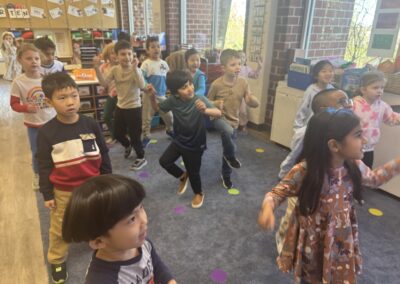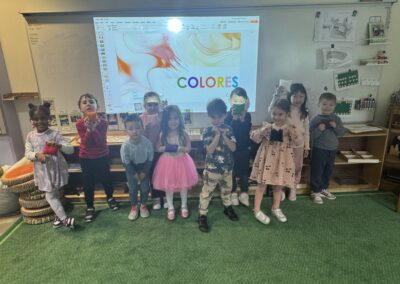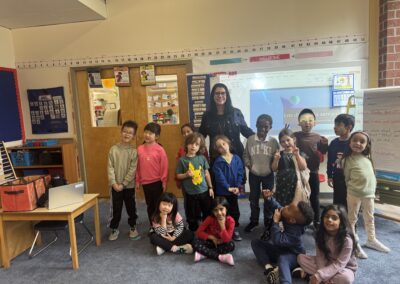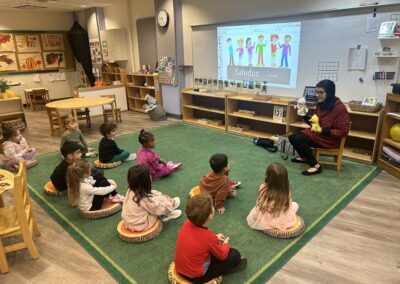The Benefits of Early Language Learning
Submitted by Janet García-Levitas, Spanish Teacher Preschool-Grade 3
Children are natural language learners, and they are known for acquiring language, rather than merely learning it. Younger children also learn languages in a different manner, as they have certain cognitive advantages linked to their age, such as higher brain plasticity and flexible ear and speech muscles that can detect differences between the sounds of a second language. They learn implicitly, through interaction, songs, listening, and imitating sounds in the target language. Young children are also driven by the desire to communicate and interact with people around them. Learning languages at an early age does not only produce linguistic benefits, but it can also enhance core cognitive skills, including reasoning, problem solving, and memory, along with improving communication and intercultural skills. Society also benefits economically, politically, and socially when its citizens can communicate with and appreciate people from
other countries and cultures.
In the Lower School, Señora García-Levitas’s Preschool 3 to third-grade Spanish classes are demonstrating the advantages of early language learning. Preschool 3 through Kindergarten have been learning the fundamentals of the Spanish language with puppets, songs, and activities that address their learning styles. This semester, Preschool 3 and Preschool 4 have been learning how to count, how to identify pets, colors and shapes in Spanish. They have learned through song, dance, games, along with oral activities and coloring assignments. Kindergarten has also been learning about numbers and colors, and they have been learning how to write the vocabulary words, to practice spelling in Spanish. Kindergarten classes have also progressed to state the days of the week in Spanish.
Beginning in first grade, the learning of cultures in Spanish-speaking countries takes a more prominent role in Spanish class, and culture becomes embedded in each lesson. Students learn what countries speak Spanish and about the daily lives of people who live in those countries, particularly children. This semester, first grade through third grade students
are learning a variety of topics, such as counting in Spanish, how to state the days of the week, months of the year, and seasons, how to talk about the weather, and how to identify objects in school and share information about the classes that they take. These topics provide ample opportunities to discuss cultural differences and similarities between students and those who live in Spanish-speaking countries, such as how they state their date in a different fashion and have a shorter school day than students in the United States. Throughout these lessons, students may be inclined to realize how much they have in common with Spanish-speaking children, and how they value family and societal bonds. In all Spanish classes, students are learning Spanish and listening, speaking, reading, and writing at their own pace and level. They are learning by means of a natural approach that focuses on what students can do with the language rather than
what they know about it, and they are having a lot of fun in the process.




